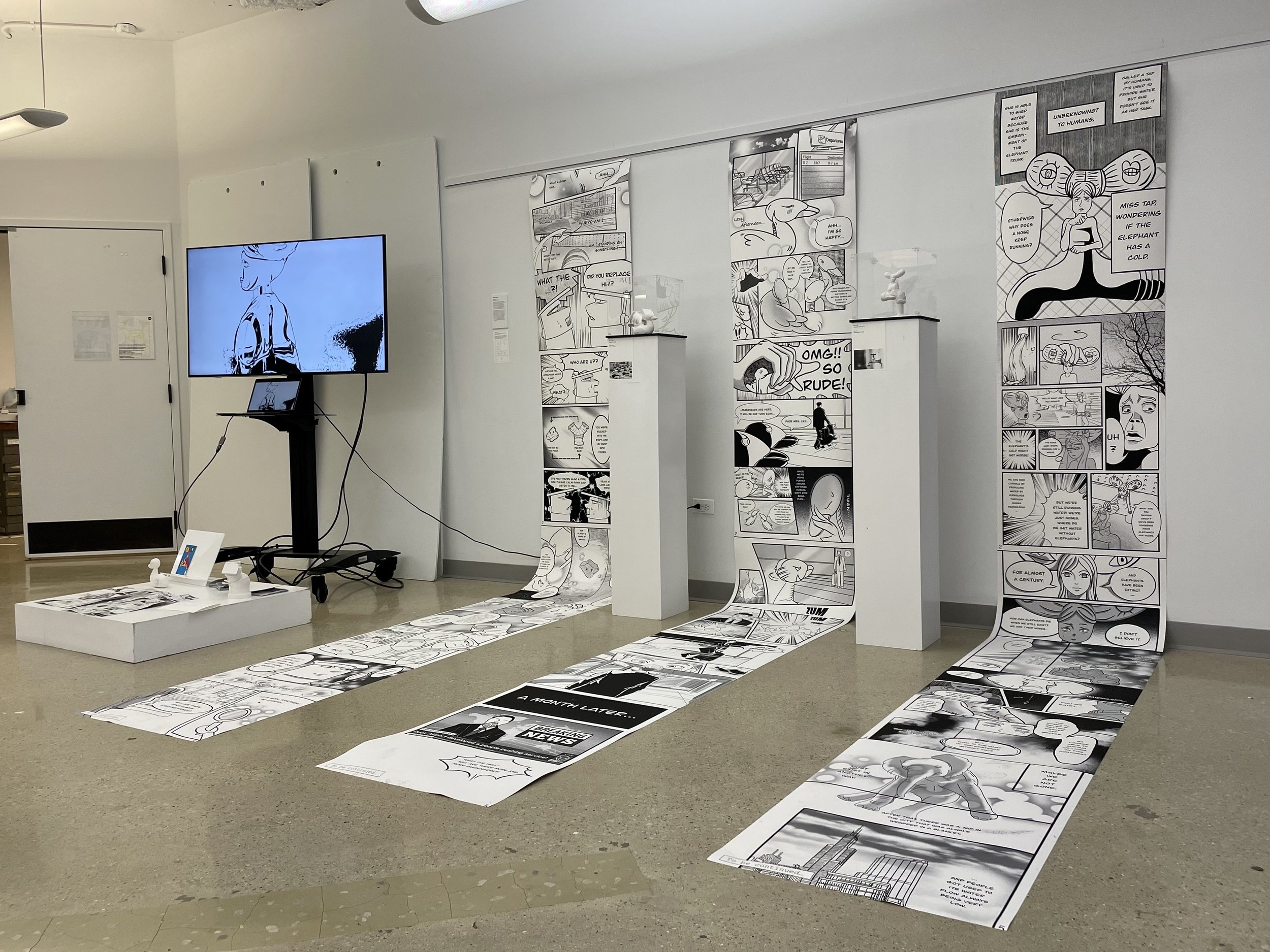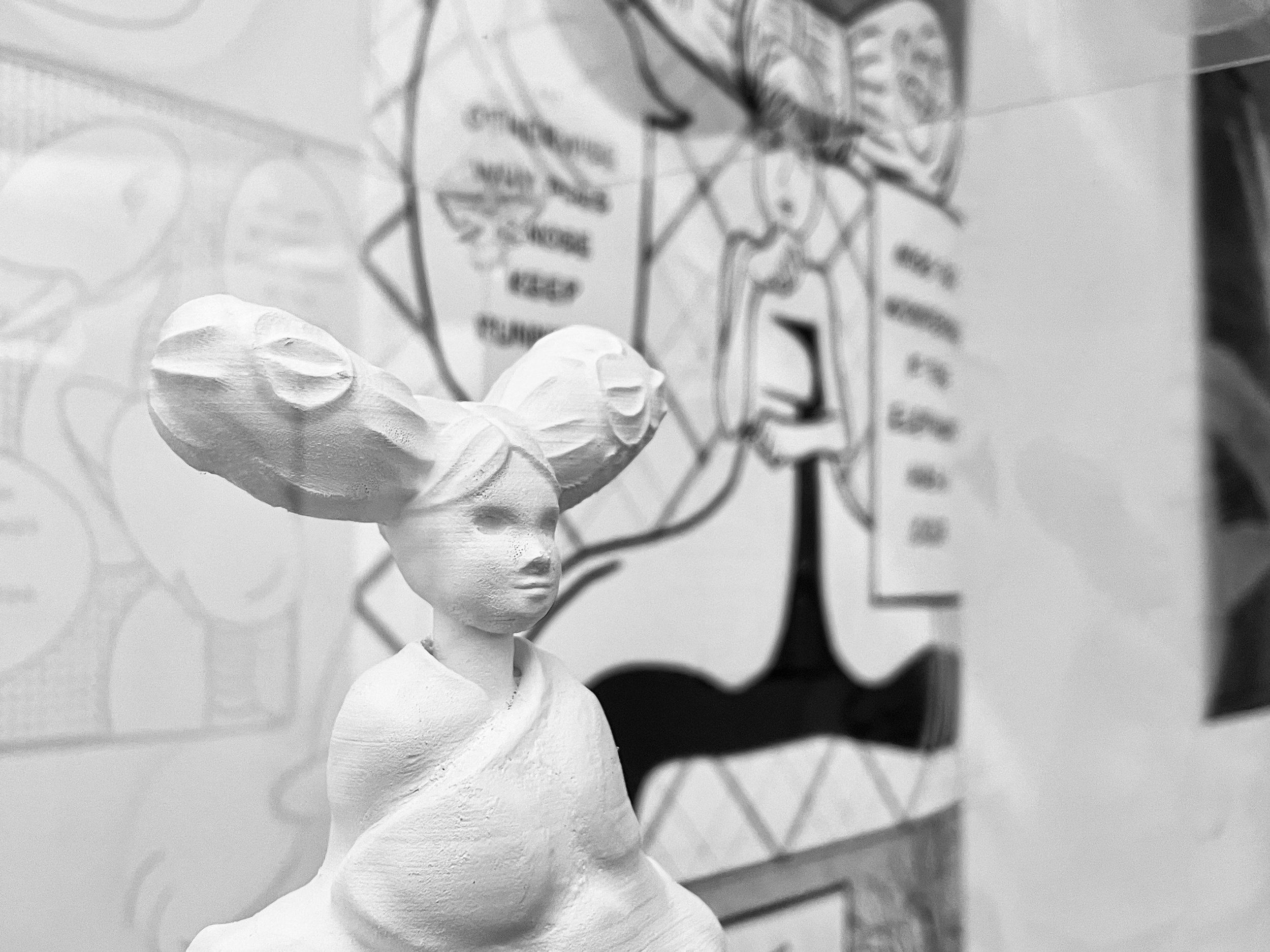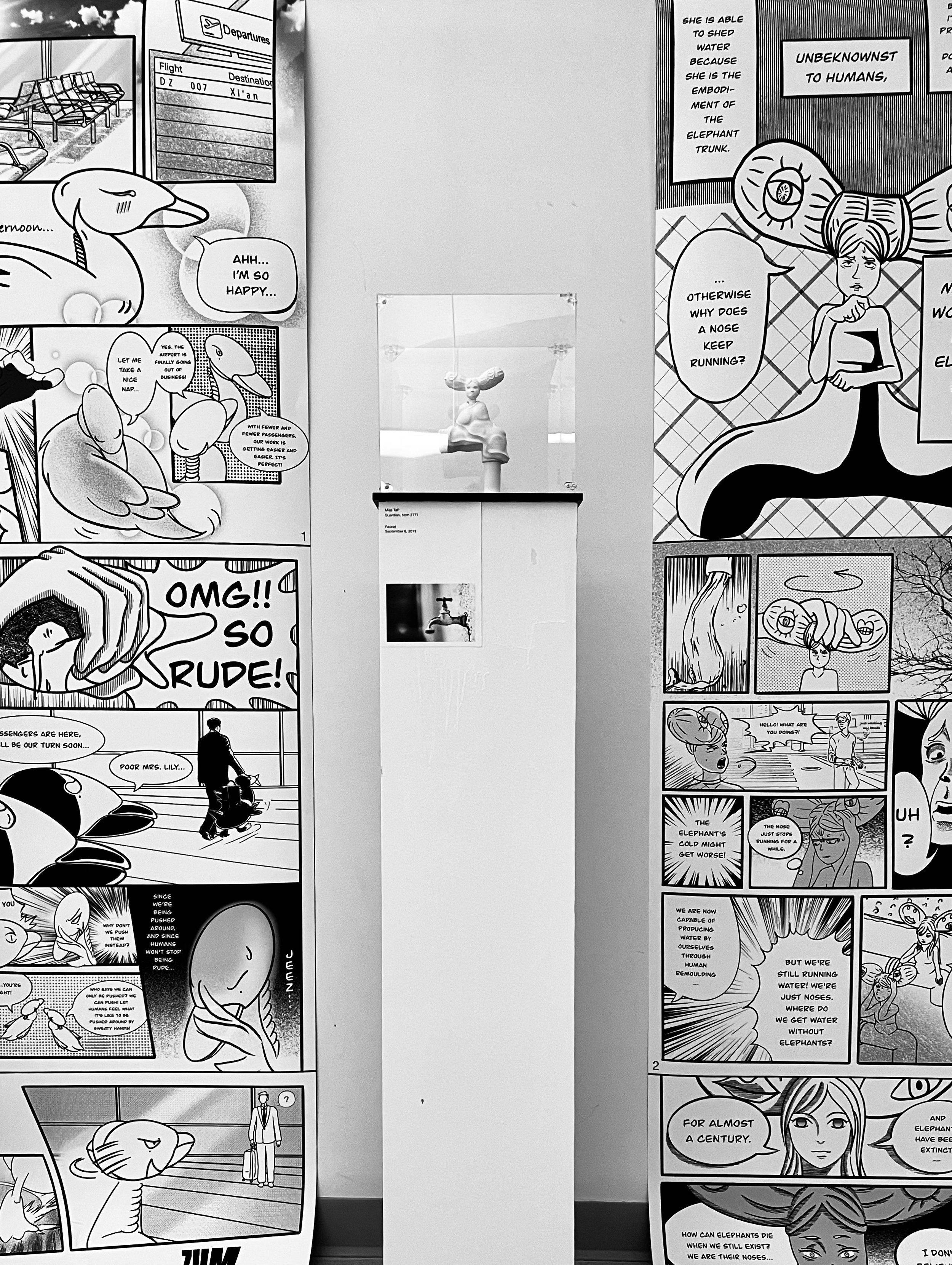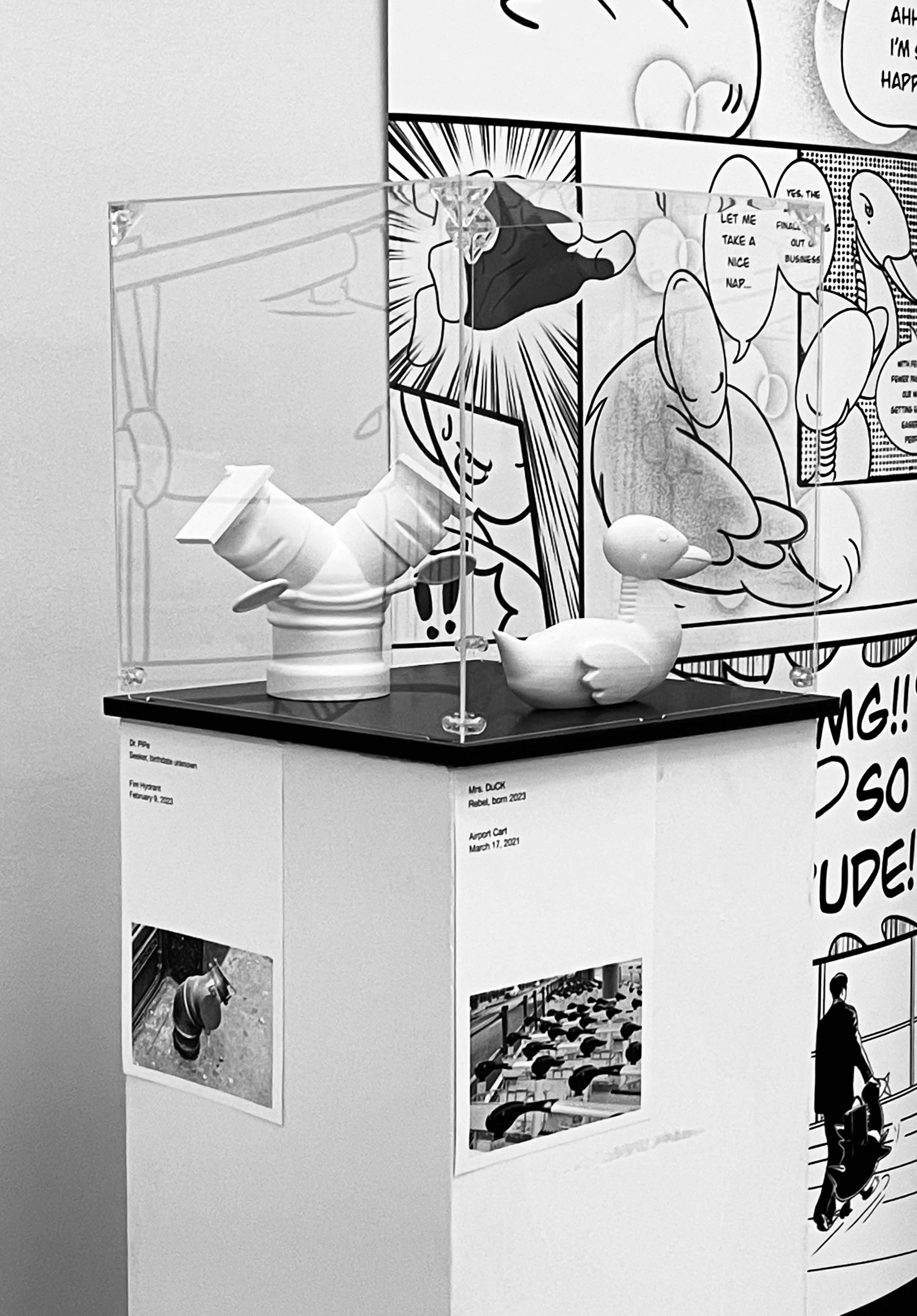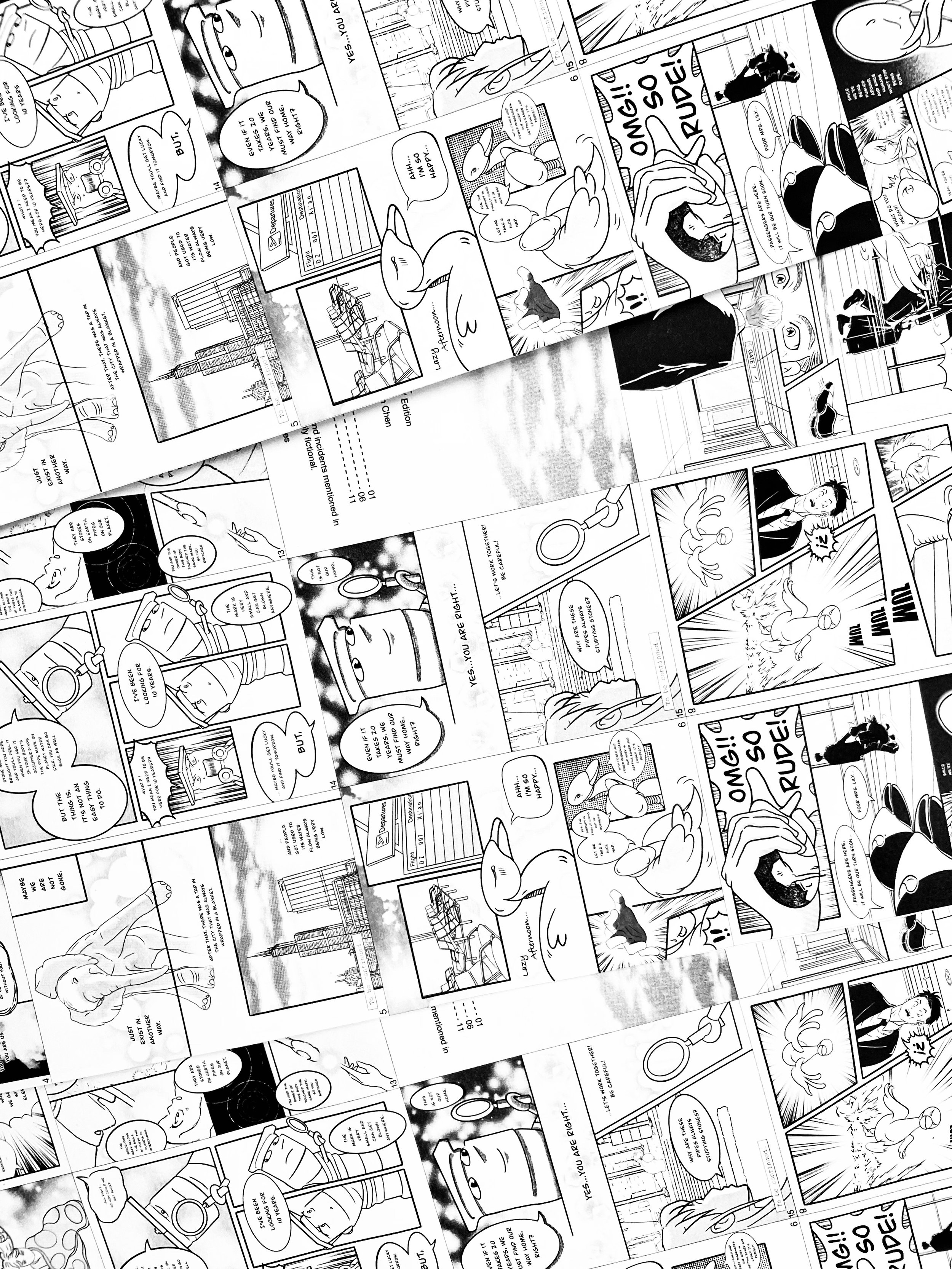Zixuan Chen
Beneath the Shell
The shell is the outer surface of the object; underneath the shell is the spiritual world. This spiritual life is characterized by both aimlessness and seriousness, and reward beyond that which is visible. It is the embodiment of emotion, but in this fast-paced era of information and explosive pressure, the slowly flowing fantasy found in the spiritual life seems useless and unnecessary.
I use my love of toys and animation as inspiration and document my search for meaning and interconnection by depicting my fantasies about the objects as living entities. These fantasies serve as a ritual, a way to retrieve and preserve emotions that have been neglected or repressed. "People know all of the advantages of being useful, but no one knows the advantages of being useless” (Chinese philosopher Zhuangzi). Through this work, I hope to encourage others to search for meaning and draw attention to hidden, but important, emotions.
Mrs. DuCK is angry because she is pushed around by people all day, and she decides to push people instead; Miss TaP seems to be warming herself up, but she's actually guarding the fallen elephant god as the last believer; and is Dr. PiPe really just studying ordinary stones? No, he’s actually looking for his way home. They are angry, rebellious, lost, seeking, challenged, and guarding. They are so alive that it makes me want to do everything I can to show them to others. I incorporate sound and video to let you hear their voices and create dimensional figures to let you see what they look like in the world we inhabit. In fact, I never thought that I was creating or designing these stories: it was they who told me. As a transcriber, all I did was try to tell their stories clearer.
More clearly, in my thesis, I use a combination of manga, 3D printing, sound, and video to create a museum themed around fantasy creatures. Manga and 3D printing allow me to create complex and detailed characters, while sound and video provide a multi-sensory experience that immerses the audience into the emotion and personality of the characters.
I am deeply influenced by Japanese manga and its unique narrative style. Manga often explores complex themes through imaginative and visually stunning storytelling, and the ability of this medium to capture the essence of emotions and transform them into visual forms has always fascinated me. In a seemingly chaotic and unstoppable world, manga provides a simple yet effective way to explore deeper aspects of human experience, including our dreams, desires, and fears. It allows us to escape the constraints of reality and enter a world of limitless possibilities. From superheroes to mystical creatures, from epic battles to quiet moments of introspection, manga allows me to create a variety of stories and characters. But its power lies not only in the stories and characters, but in the way it challenges us to think about ourselves and our place in the world. Some people may think that manga is childish or unrealistic, but for me, manga always provides a source of wonder, embracing the beauty and complexity of the inner life and allowing me to find inspiration and a sense of awe that can change the way I view life, no matter how old I am or how much the world around me changes.
Figures, or dolls, are another passion of mine that originated from manga but that go beyond simply displaying characters. In my life, they are the physical representation of "useless": they cannot serve a practical purpose, I cannot even handle them frequently in order to maintain their quality, and they only exist for the spiritual connection they generate within me. However, they are something I will never abandon. In an age of materialism and consumerism, preserving our emotional connections to objects is necessary. For me, this obsession transcends the physical and extends to my thoughts, attitudes, and beliefs. Cherishing and protecting what I value is my personal philosophy, regardless of how others view their usefulness or significance, whether they be objects or ideas. This is also why I was motivated to showcase my project in the form of a museum: to show everyone that these things are precious and worth treating with respect.
I once thought about coloring the figures to recreate their appearance in my illustrations, but when I looked back at the origins of these fantasies, they didn’t include specific colors. I couldn't even remember why I chose those colors for my illustrations, I just felt they should be that way at the time. In fact, they could be any color, at any time. So I chose to display the original models in black and white, believing that this would allow them to be shown in the most color-inclusive way possible.
Beneath the Shell is a dialogue between the physical and spiritual worlds, and between the familiar and the unfamiliar. The shell is the outer surface of an object; underneath the shell is the spiritual world. Our emotions, thoughts, and beliefs make up our spiritual world, which is just as important as the material world. One of the reasons I was inspired to create “Beneath the Shell” is because I believe that in the process of pursuing goals and achievements, we
often overlook our emotional and spiritual lives. We become so focused on becoming productive and useful individuals that we forget the value of the useless, and the romance of indulging in fantasy and imagination. By creating this fantastical space, I hope to inspire others to connect with their deepest selves in a transformative way.
Walking provides the perfect opportunity to get lost in fantasy, but the first time I decided to take a picture while walking was when I saw these airport carts: at that moment, I felt vividly that they looked like a group of ducks. Since then, I have expanded the habit. Eventually, thousands of photos lay in my album, and I wanted to tell their stories fully. The three illustrations that are used as postcards were previously completed, and they intuitively record the idea I had at the moment: the carts looks like angry ducks, the faucet looks like a woman wrapped in a blanket, and the fire hydrant looks like it is studying a pebble. But when I looked back at these illustrations, I found they were far from enough. I still wondered: why are the ducks angry? Why is the woman wrapped in a blanket? Why is the pipe studying stones? The illustration were just screenshots of a broader narrative, but the stories are much more than single images, so I turned them into manga.




